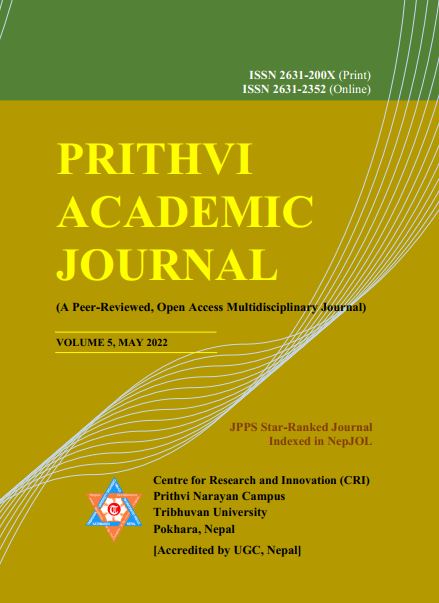From Conflict to Peace Building: Transforming Trauma in the Post-Conflict Nepali Narratives
DOI:
https://doi.org/10.3126/paj.v5i1.45050Keywords:
Conflict, Maoist insurgency, peace, post-conflict Nepali narratives, trauma theoryAbstract
In this paper, I explore the devastation of war and its effect on the people’s lives, followed by an anticipation of peace in the post-conflict narratives: Mohan Raj Sharma’s “A Ra and a Mo” and Rajendra Bimal’s “The Lankuri Tree Will Blossom Again.” The narratives are about ten-year long Maoist insurgency that caused more than fifteen thousand innocent people’s lives. In the beginning, the narratives have been analyzed by showing how these authors show the trauma of conflict victimized by dealing with the negative aspect of one fighting group, and trauma presented with the help of a neutral observer of the event not supporting and opposing any groups. A theoretical argument of some well-known theorists like Caruth, Lacapra, Alexander and Pandey have been discussed to bring out the traumatic facts of the insurgency. In particular, Caruth and Alexander’s insights of trauma theory have been used to bring out the traumatic facts that the characters have undergone whereas Lacapra’s middle voice has been used to measure how the narratives have been designed in the plot. The major issue of this paper is to show that the narrators being either a biased or partial observers of the insurgency or a neutral witness of the events have narrated the testimony of the insurgency.
Downloads
Downloads
Published
How to Cite
Issue
Section
License
Copyright (c) 2022 Authors and Centre for Research and Innovation (CRI)

This work is licensed under a Creative Commons Attribution 4.0 International License.




